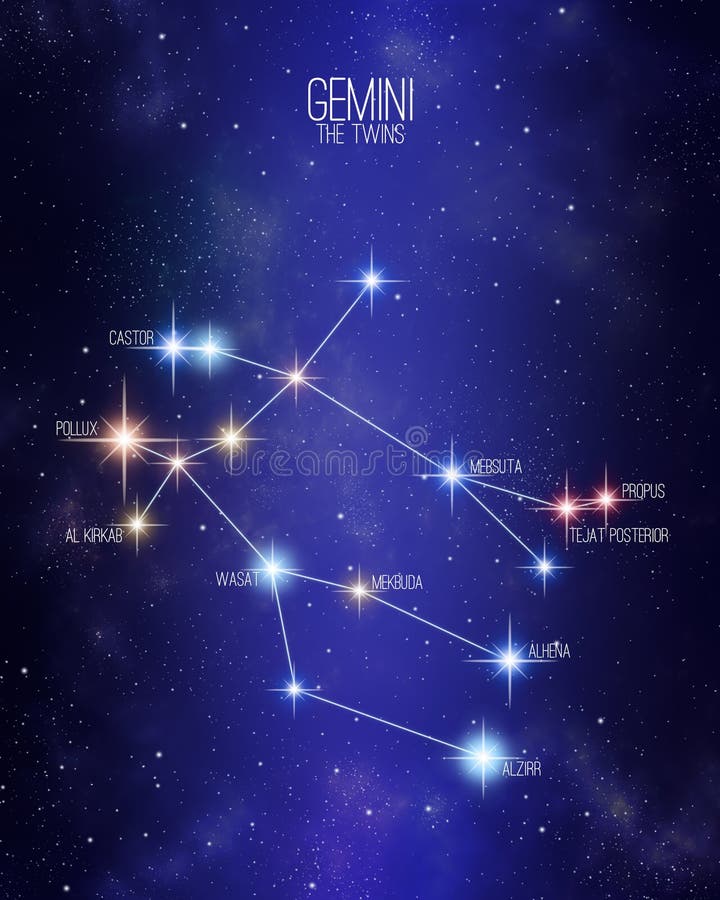

So, we’ve wandered down the Zodiac, or the path of the sun, moon, and planets through the sky from Taurus to Gemini. This amazing star system is actually a triple-double system of six stars! Staggeringly, all three stars are “spectroscopic” doubles, or stars that only reveal their very close companions in their spectra. There is a very faint third star, Castor C, which makes the system a triple visual binary. Currently the separation of the double is 4.8 arc seconds and increasing.Ĭastor A and Castor B are a “visual binary.” Rather than just appearing close together because they happen to be in the same line of sight here on Earth, they actually orbit one another in a multiple star system.
#Twins constellation full#
For comparison the full moon is about 30 minutes across). When I first started pointing my telescope at the sky in the 1960s, the double was quite hard to resolve at 1.8 arc seconds (an arc second is 1/60 th of an arc minute, which is itself 1/60 th of a degree. Castor A and Castor B, as the two components are named, revolve around one another. It’s easy to remember which one is Pollux because he is on the Procyon side of the pair ( Refer to Star Chart ).įittingly, Castor is a spectacular double star and is easily resolvable in a small telescope at 100x. Look above the top of the triangle and locate Pollux and Castor nearly overhead. To find Gemini, locate Orion and the Winter Triangle (Sirius, Betelgeuse, and Procyon) in the southwest sky shortly after dark. That’s how they both ended up in the stars. Because Pollux was immortal and Castor was not, Pollux hit up the old man to make his brother immortal too. Castor was the son of Leda’s husband Tyndareus, king of Sparta. Pollux was the offspring produced by that infamous meeting of Leda and the swan (Zeus in disguise). The Twins in Greek mythology are the children of Leda. It’s an easy constellation to spot because it is marked by, as you might guess, two fairly bright stars: Pollux and Castor. Gemini is the winter constellation that heralds all the spring stars rising in the east throughout the night. Next up in the cosmic seasonal procession is Gemini, the twins. You can always refresh your memory of previous stars and their patterns explored in past columns by searching the M’Online website: The idea here in The Backyard Astronomer is to introduce you to the big, bright constellations first, building one on another. Learning the constellations isn’t hard if you do it bit by bit.


 0 kommentar(er)
0 kommentar(er)
